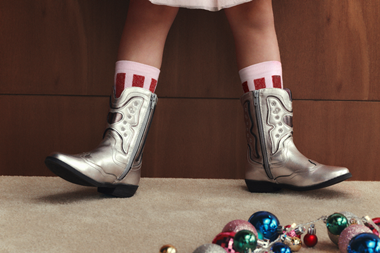Retailers have been striving for sustainability when building stores, but have done little about what goes into a shop. Now the Building Research Establishment has created a tool aimed at putting this right.
Two or three years ago, green stores were all the rage. Announcements of new eco-friendly stores flooded the in-boxes of journalists covering the retail sector and it seemed it was only a matter of time before global warming would be solved by the collective efforts of large store chains.
While many retailers may come close to their stated ambition to become carbon neutral within a specific time frame, this does not mean that there’s nothing else to do. Jon Mussett, head of building design consultancy Building Research Establishment (BRE), puts the point succinctly: “The concentration for retailers has been on the building itself: what it’s made of, how energy-efficient it is and how sustainable it is in the long term. There has been little made of what goes into a shop and shopfit and store fixtures can be just as important.”
The BRE partnered with Marks & Spencer, design consultancy Fitch and point of purchase company DisplayPlan to look at how store interiors and fixtures might be more sustainable. When M&S was in the early days of its Plan A initiative, a small amount of noise was made about fixtures that had been made from recycled plastic. But research by the BRE shows that more energy is expended taking scrap plastic and turning it into something new, although this may not have been the case at M&S.
The task facing the BRE, M&S, Fitch and DisplayPlan was to create a tool that would let retailers, designers and store fixture manufacturers assess how much energy was being used when creating a new piece of equipment.
To date, a research paper has been produced and a tool has been developed that covers everything from the quantity of embedded carbon in a material used for shop fixtures, to the amount of energy likely to be used in its manufacture and the effect of the transport involved. The outcome is a computer programme that allows those with new in-store fixtures to find out the likely impact on the environment.
BRE commercial director Naomi Wells says: “This will allow designers to come up with the optimum and most ecologically-friendly method when looking at a retail environment.”
And there are a range of options. For example, should a fixture be glued or assembled? If glued, it will wind up in landfill, as nothing can be done with it when its lifetime is over. If it’s assembled, it could be taken apart and repurposed. With a variety of options, it’s hard to see why retailers aren’t beating a path to the BRE. But before this is the case, it will have to be trialled, tested and piloted, if retailers are to adopt it.
BRE chief operating officer Niall Trafford is optimistic about its uptake: “The bit that makes a real difference is that it’s data driven. People need facts to make decisions.”
As M&S has been instrumental in the development of this, it is set to accrue the initial benefits. However, the shopfit development tool will be available to other retailers from March.
The big question is how much will it cost? No figure is available from the BRE currently, but given the zero carbon commitments that many retailers have made, this could turn out to be money well spent.


























No comments yet